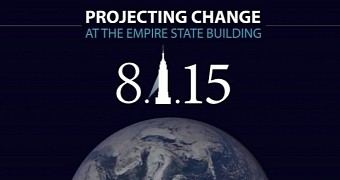Over the weekend, on August 1, the iconic Empire State Building in New York City, US, was lit up by dozens of images of critically endangered and threatened species.
Among these digital portraits projected onto the Empire State Building was a photo of Cecil the lion, killed earlier this month by American dentist / recreational big-game hunter Walter Palmer.
Then there were images of manta rays, snow leopards, birds, snakes and many other creatures that risk falling off the biodiversity map because of deforestation, pollution or man-made climate change and global warming.
The pictures were projected onto the Empire State Building's southern side and were visible from 20 blocks away. Check out the video below to see how it all played out.
The event began at 9 p.m. local time, shortly after nightfall, and ended around midnight. Needless to say, the art project, spearheaded by filmmaker and wildlife photographer Louie Psihoyos, did not go unnoticed.
So what was the point of this project?
It's easy not to think about endangered species when busy navigating the urban jungle. Seeing their portraits light up the Empire State Building, however, is bound to change people's perspective.
This is precisely what the event's organizers had in mind: raising awareness about the need to safeguard whatever biodiversity is left on Earth and protect the species that are now endangered.
“This projection event on one of the world’s most iconic buildings will catalyze a movement to preserve the real treasure of our beautiful planet: its life,” explain Louie Psihoyos and his collaborators.
The initiative, dubbed “Projecting Change: The Empire State Building,” was also meant to promote upcoming documentary film “Racing Extinction,” set to air on the Discovery Channel on December 2.
The work of Louie Psihoyos, “Racing Extinction” aims to educate the public about humanity's role in saving or condemning thousands of species across the globe to extinction.

 14 DAY TRIAL //
14 DAY TRIAL // 